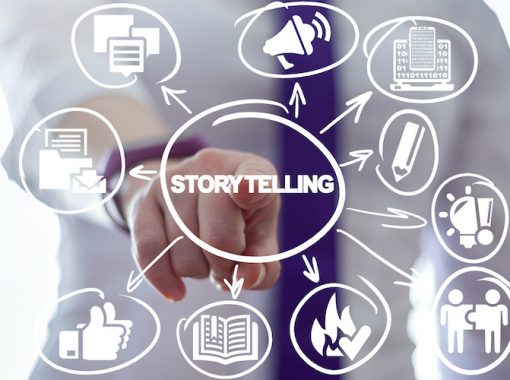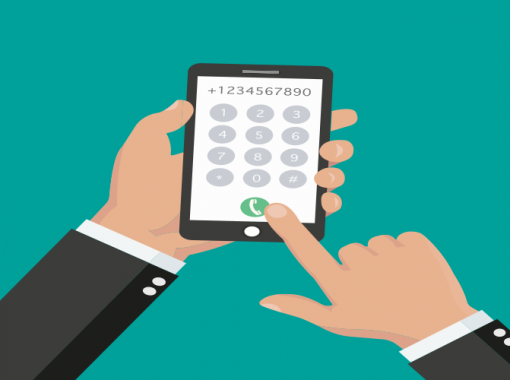
Data may be the hottest commodity in the business world right now, particularly because it gives you actionable insights based not on “gut instinct” but on tangible, hard numbers. Call intelligence is the convergence of data analysis and phone call marketing, and it outlines an analytical strategy that can bolster your use of vanity 800 numbers and other assets. Here’s how call intelligence can give your business an advantage.
Judging the ROI of Marketing Campaigns
Call intelligence simplifies the sometimes tricky process of assessing the ROI on individual marketing campaigns because you can use it to figure out how well potential customers respond to your messaging.
For example, suppose you have two campaigns, Campaign A and Campaign B, and Campaign A is outperforming Campaign B. To figure out the reason, you can analyze the call data for each one. After doing a little digging, you realize that in the more effective campaign, Campaign A, prospects spend an average of five minutes on the phone talking to salespeople. In the less effective campaign, Campaign B, prospects spend an average of three-and-a-half minutes on the phone.
To verify what seems to indicate those involved with Campaign A may be doing a better job, you also check the transcriptions of recorded calls. You check each block of text for important keywords that may indicate a customer leaning in one direction or another. For instance, you look for phrases such as “I like,” or those that connote a question, such as “What are …” or “How do …” because these also indicate engagement on the part of the customer.
Your results show that Campaign A not only produced longer phone conversations, but it also had more positive keywords. You can then use this data and apply it to training call center employees and salespeople. To do this, you could:
- Create a presentation showing the statistics associated with several successful calls and highlight them during a team meeting.
- Invite those who participated in the calls that the data showed were effective to explain how they made the right choices and offer tips to others who want to emulate their success.
- Isolate the data-supported effective calls, analyze their transcripts, and use them to create training materials so other employees can have similar success.
Assessing the Effectiveness of Call Center Employees
Your call center team, whether it’s staffed with technical support professionals, people answering questions, or salespeople represents the boots on the ground you rely on to interface with the public. You can use call intelligence to assess the effectiveness of individual employees, offer training to those who want to improve, and offer those who don’t have a friendly exit from your organization.
To illustrate, suppose your organization has a call center that takes calls from five different vanity 800 numbers, and each associate is trying to close a sale. Everyone seems reasonably happy with their jobs and the morale in the room is positive, but sales figures aren’t where they should be. Using call intelligence, you can assess how often each employee closes a sale, as well as how long their interactions with customers last, and even the times of day when they’re most effective.
With this data in hand, you can provide encouraging commendation to the effective sales personnel and additional training for those that have been falling short of the mark. As importantly, you can set goals for each employee, even customizing each benchmark according to historical performance.
For example, if your objective is to cultivate a higher number of effective sales associates across the board, you can adjust goals based on individual work habits. For instance, if someone tends to be more effective between the hours of 9 a.m. and 11:30 a.m., you can have a fruitful discussion about why they think that might be the case and then set a goal for them to perform a little better after lunch.
In this way, you leverage the statistical analysis of your call intelligence tools to create tangible action steps. As a result, the entire sales team can improve— on an individual basis.
Identifying Seasonal Trends in Phone Marketing
When sales figures fluctuate — in either direction — it can be difficult to understand why, and call intelligence can make it easier to support your observations with data. When combined with vanity toll-free numbers, call intelligence is a particularly good tool, especially if you choose vanity numbers designed to draw people in at certain times of the year.
This may be necessary if:
- Sales tend to slump during the same months each year.
- You’re not getting the closings you expected during what are supposed to be “hot” selling seasons.
With call intelligence, you can pinpoint issues and then use vanity 800 numbers or local vanity phone numbers to address the issue. For instance, if each year sales slide during the summer months, you can use a vanity number that includes words such as “heat,” “hot,” “summer,” or the names of summer months: “June,” “July,” or “Aug.” In this way, you implicitly associate a sense of urgency with whatever promotion you’re running. There’s a soft timeframe connected with the end of Summer, and this may help motivate customers to commit.
Similarly, if call intelligence data reveals sales during what should be more productive seasons are slumping, you can use targeted 800 vanity phone numbers to drum up more business. Words associated with events that characterize those times of the year can both grab the attention of your existing customer base and that of new customers, giving a welcome shot in the arm to your sales figures. By combining 800 numbers with call intelligence, you can mitigate any sales slumps using a data-supported strategy.
Identifying Specific Customer Needs
Call intelligence really shines when it comes to assessing the mindset of customers. Because you can access transcripts of what they say as well as actions they take while on the phone, you get a boatload of helpful data. Here are some questions you can answer using analysis from call intelligence:
When Are My Customers Most Likely to Buy?
Knowing when your customers tend to make purchases can help when it comes to deciding when and how to staff your phone system, how to train employees regarding the ways they can take advantage of hot times, and even when to put your best salespeople on the schedule.
Call intelligence can provide you with data about the days and times people call the most, as well as what happens during those calls. In this way, you can use time-based metrics to assess:
- The days in the week customers are most likely to commit to a sale.
- When in the day customers tend to commit.
- How long it takes for the average customer to commit.
Further, you can aggregate the data according to:
- Specific salespeople.
- Individual campaigns.
- The amount of money invested in staff, campaigns, and digital resources, like enterprise resource planning (ERP) systems.
As the saying goes, “Timing is everything,” and using call intelligence to quantify how this impacts the above can give you a distinct advantage.
From Where Are My Paying Customers Coming?
Do the needs of your customers vary significantly according to geographic area? If so, do you want to double down on areas where you’re successful, shore up your efforts in underperforming locations, or a combination of both? The first step can be to use call intelligence to see how customer needs vary based on where they live.
Armed with call intelligence, collecting and analyzing the data you need to make these kinds of decisions is much more straightforward than manually combing through pages of Excel spreadsheets or relying on anecdotal evidence. Collecting geolocation stats is simple, and with call intelligence identifying trends for each area can be just as linear.
For instance, you can, on a single screen, see the number of calls made on a certain day in a specific area, as well as how that figure fluctuates over time. You can also click on specific calls and read their transcripts to see which kinds of issues customers from a certain area raised, as well as any pressing concerns they had. You can also track the revenue associated with people from specific areas, and use this data to identify geographic trends.
What Features Do My Customers Want?
While a call center sales associate may be focused on closing deals, they can be just as effective at gathering feedback from your target customers. This can be done by engaging them in conversation that surfaces their needs. Then, instead of relying on notes they take or their memory, you can use call intelligence to analyze the transcripts of what was said.
This enables you to keep track of trends indicating which features customers want added to your product or service. You’re also able to identify the features customers have the most trouble with. This data gives you a quantifiable glimpse into the desires of your target market, and you can use these insights to improve your offerings.
With 800.com, you can get both vanity numbers and call intelligence solutions that empower you to assess the effectiveness of your strategies, identify useful trends, train employees, and pinpoint customer needs. To get started with call analytics, reach out to 800.com today.












